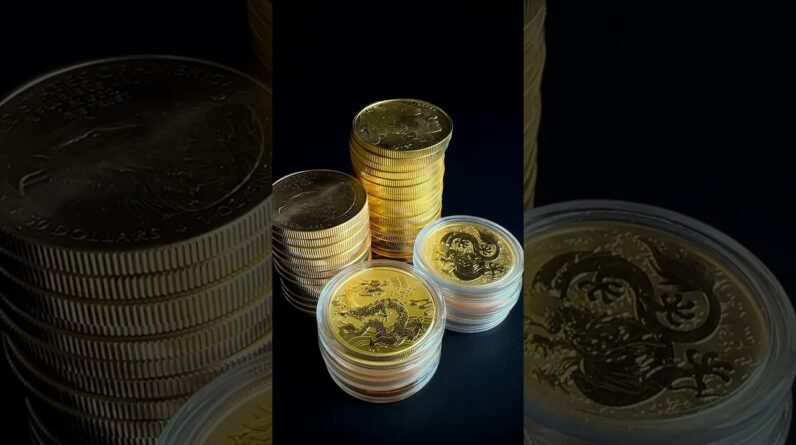The flipping of the gold and silver market is a phenomenon that has captured the attention of investors worldwide. In this in-depth analysis, we delve into the factors behind this significant shift and explore the implications it holds for both seasoned traders and newcomers seeking to make their mark in the precious metal industry. As we examine the various trends, patterns, and market dynamics at play, one cannot help but be intrigued by the complexities and potential opportunities that this market upheaval presents. Join us as we unravel the intricacies of the gold and silver market, shedding light on what lies ahead for savvy investors and the impact it may have on the global economy.
The Flipping of the Gold and Silver Market: An In-depth Analysis
Introduction
In recent years, the gold and silver market has experienced a significant shift that has left dealers and investors perplexed. This sudden change in dynamics has raised several concerns and uncertainties. In this article, we will delve deep into the reasons behind the flipping of the gold and silver market and analyze its implications on the buying and selling of these precious metals.
The Impact on Dealers
During times of price spikes, dealers find themselves in a peculiar position. The heavy inventory they hold can deter them from buying gold and silver, as they fear an adverse impact on their financials. It becomes a game of risk assessment as they weigh the potential profitability against the potential losses incurred. This cautionary approach by dealers can be observed across both gold and silver markets.
Local Coin Shops’ Struggles
Local coin shops, which often rely on regular and local customers, can suffer a severe blow under such circumstances. Given the heavy inventory and dealers’ lack of interest in buying, these shops find it challenging to sustain their business operations. The reduced demand can force them to explore alternative options or even contemplate shutting down their businesses.
Market Volatility and Its Effects
Market volatility plays a crucial role in determining the willingness of dealers to purchase gold and silver. The ups and downs in prices can have a direct impact on the inventory held by dealers. Sharp drops can cause panic-selling, leading to a flooded market, while sudden spikes can result in dealers being cautious about buying more inventory. This uncertainty poses challenges for both buyers and sellers.
Selling Popular Coins to Larger Dealers
While it may be difficult to sell gold and silver during market volatility, established dealers may still be interested in purchasing popular coins. These coins, commonly sought after by collectors and investors, tend to hold their value well. Selling them to larger dealers may still be a viable option, as they have a more significant customer base and the capacity to absorb the inventory.
Challenges in Selling Unpopular Items
On the flip side, selling unpopular coins or items can pose a greater challenge. These items, having less demand or speculative value, may not attract the interest of larger dealers. In such cases, smaller dealers might be the only option, but their limited resources and customer base can make the sale more challenging. Finding the right buyer for these items requires patience and persistence.
A Temporary Blip or Universal Situation?
It is crucial to understand that the flipping of the gold and silver market may not be a universal situation. While it may be a temporary blip driven by specific market conditions, it is essential to monitor the market closely for any lasting consequences. The dynamics of the market are subject to change, and staying informed is crucial for both buyers and sellers.
Economic Outlook and Future Prospects
Looking ahead, gold is expected to remain strong in the market, thanks to economic conditions. The uncertainties surrounding the global economy, along with inflationary pressures and geopolitical tensions, are likely to drive the demand for gold as a safe-haven asset. Therefore, those considering investing or selling gold should plan their moves strategically and consider the broader economic outlook.
Planning and Considering Alternatives
In light of the current scenario, it becomes crucial for individuals to plan their gold and silver investments wisely. Diversification into other assets and considering alternatives, like investing in stocks or real estate, can help mitigate risks associated with the flipping gold and silver market. Understanding the broader investment landscape and exploring different options is vital for maintaining a balanced portfolio.
Conclusion
The flipping of the gold and silver market has presented unique challenges for both dealers and investors. Heavy inventory during price spikes, impacts on local coin shops, market volatility, and the challenges of selling unpopular items all contribute to the complexity of the situation. However, it is essential to remain informed, adapt to changing market dynamics, and consider alternatives for buying or selling precious metals. With a strategic approach and a clear understanding of the economic conditions, investors can navigate this ever-changing market successfully.
FAQs
-
Will this flipping trend impact the value of gold and silver in the long run?
The flipping trend is likely a temporary blip influenced by market conditions. Gold and silver are expected to maintain their value in the long run, considering global economic factors and their status as safe-haven assets. -
What options do local coin shops have to overcome the challenges posed by the flipping market?
Local coin shops can explore alternative revenue streams, such as offering additional services like coin appraisals or diversifying their inventory to cater to a broader customer base. These steps can help them sustain their businesses during challenging times. -
Are there any specific coins that are more likely to be sold during market volatility?
Popular coins, commonly sought after by collectors and investors, tend to hold their value well and are more likely to be purchased by larger dealers. It is crucial to research market trends and consult with experts to identify such coins. -
What are the factors driving gold’s expected strength in the future?
Economic uncertainties, inflationary pressures, and geopolitical tensions contribute to the demand for gold as a safe-haven asset. These factors, along with its historical value as a store of wealth, make gold a favorable investment option. -
Should investors completely avoid the gold and silver market during periods of market flipping?
While market flipping can pose challenges, completely avoiding the gold and silver market may not be necessary. Investing strategically, diversifying portfolios, and staying informed about economic conditions can help investors make well-informed decisions even during volatile periods.










